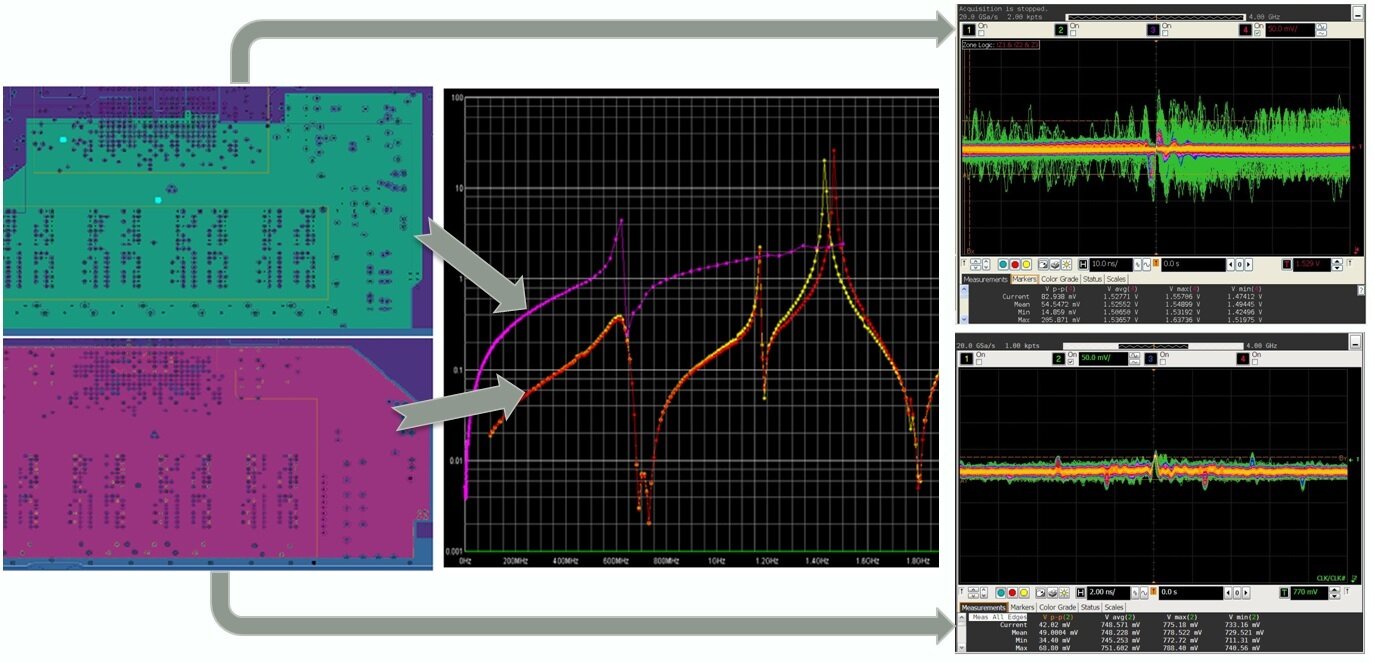
power integrity analysis — how clean is your power delivery?
At E3 Compliance we know clean, low impedance power delivery is the foundation of a quiet and reliable product. Digital designs demand an ever-increasing amount of high speed current draw at lower power rails. Improperly designed power delivery networks (PDNs) often result in unreliable product operation or EMC failures. We use experience, simulation tools, and key measurements to ensure that the PDN is optimized to meet all power integrity requirements. We look beyond the functional requirement of ICs and provide an effective solution that meets power integrity requirements and enhances the EMC performance of the product.
CONTACT US TODAY TO GET YOUR ANALYSIS SCHEDULED WITH ONE OF OUR EXPERTS→
We use both analysis and measurement tools to design and characterize PDNs and we focus on two primary requirements:
● Excessive DC voltage drop between the power source and the load pins
● Excessive impedance at power input pins
● Resonance issues that can cause poor power quality and excessive Emissions
At E3 Compliance, we take a proactive approach for screening our customers’ designs for potential issues and optimizing them prior to release.
About E3 Compliance
E3 Compliance is an independent engineering consulting company located in downtown Grand Rapids, Michigan. Here at E3, we specialize in EMC and High-speed design, analysis and perform pre-compliance and diagnostic testing in our ~6000 sq ft EMC lab. We help our customers upfront in the product development process so they can pass compliance testing with confidence and get to market on time. We support product launches at any phase of development in automotive, aerospace, consumer, medical, office, industrial and other applications. Contact us or download our company overview PDF to learn how we can help you save time and money.
Ready to get started? Request a quote today on your current or next project.


